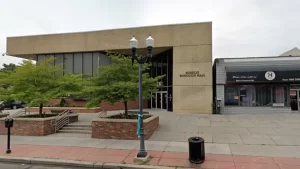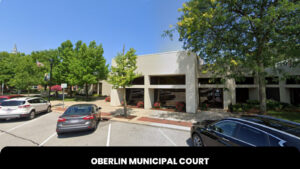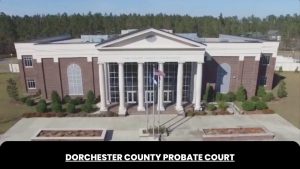Introduction to the Middle District of Florida
The Middle District of Florida is one of three federal judicial districts in the state of Florida. It covers a broad swath of central and northern Florida. The Middle District has a long history dating back to the early 19th century when Florida was still a territory. Today, it is one of the busiest federal courts in the country.
Overview and History
The Middle District of Florida was originally established on March 3, 1821 when Florida was still a territory of the United States. It is one of the oldest federal judicial districts in the country. When Florida became a state in 1845, the Middle District was retained and authorized by Congress.
The Middle District has seen many changes over the past two centuries. Its geographic boundaries, number of judges, and caseload have evolved. However, its purpose has remained constant – to uphold federal law and deliver justice.
Geographic Boundaries
The Middle District of Florida encompasses 35 counties in central and northern Florida. It stretches from Florida’s east coast to its west coast.
The Middle District is bounded by the Northern District of Florida to the north. The Southern District of Florida borders it to the south.
Counties Covered
The 35 counties within the Middle District’s jurisdiction include:
- Baker
- Bradford
- Brevard
- Charlotte
- Citrus
- Clay
- Collier
- Columbia
- De Soto
- Duval
- Flagler
- Glades
- Hamilton
- Hardee
- Hendry
- Hernando
- Hillsborough
- Lake
- Lee
- Manatee
- Marion
- Nassau
- Orange
- Osceola
- Pasco
- Pinellas
- Polk
- Putnam
- St. Johns
- Sarasota
- Seminole
- Sumter
- Suwannee
- Union
- Volusia
This diverse group of counties spans urban, suburban, and rural areas of the state.
Courthouses and Staff
The Middle District of Florida’s main courthouse is located in Tampa. However, it has courthouses located in several cities across its broad geographic jurisdiction. The court also has a U.S. Marshal and other staff who help carry out its duties.
Main Courthouse in Tampa
The main courthouse for the Middle District of Florida is the Sam M. Gibbons United States Courthouse located in Tampa. This courthouse houses the district court clerk’s office, offices for the district judges and supporting staff, and multiple courtrooms.
The courthouse address is:
Sam M. Gibbons U.S. Courthouse
801 North Florida Avenue, 4th Floor
Tampa, FL 33602
This courthouse was built in 1905. Originally named the U.S. Post Office and Courthouse, it was renamed in honor of Congressman Sam Gibbons in 1997.
Other Courthouse Locations
Due to the large size of the Middle District of Florida, it has divisional courthouses located in Fernandina, Fort Myers, Jacksonville, Live Oak, Ocala, Orlando, and Saint Petersburg. Judges and court staff work at these locations to handle cases from the surrounding division area.
Having courthouses located throughout the district enables cases to be heard closer to where they originated. It makes the judicial process more accessible to residents.
U.S. Marshal
The U.S. Marshal for the Middle District of Florida is William Berger, Sr. The Marshal is responsible for protecting the federal judiciary, apprehending fugitives, housing and transporting federal detainees, and more. There are Deputy U.S. Marshals stationed at all courthouse locations.
Caseload and Operations
The Middle District of Florida has a heavy and diverse caseload. A range of federal judges and court staff handle this caseload and carry out the court’s duties.
Types of Cases Heard
As an Article III federal court, the Middle District of Florida hears both criminal and civil cases involving federal law.
Some examples of cases heard include:
- Drug crimes
- White collar crime and fraud
- Immigration cases
- Federal tort claims
- Civil rights cases
- Patent and copyright cases
- Bankruptcy appeals
- Social security appeals
The Middle District uses both district court judges and magistrate judges to handle its large caseload efficiently.
Judges and Staff
To handle its significant caseload, the Middle District of Florida has a number of judgeships and court staff positions.
Article III Judges
There are 15 district court judges who are appointed under Article III of the U.S. Constitution. They are nominated by the President, confirmed by the Senate, and serve lifetime appointments.
Article III judges preside over trials, hear motions and pretrial activities, and perform other judicial duties.
Magistrate Judges
There are eight federal magistrate judges in the Middle District of Florida. Magistrate judges handle preliminary criminal matters, prisoner cases, and some civil case proceedings. They assist district judges with managing caseloads.
Federal Public Defender
The Federal Public Defender’s Office provides legal defense services to criminal defendants who cannot afford an attorney. The Federal Public Defender for the Middle District of Florida is appointed to a four-year term.
Conclusion
Summary of Key Facts
- The Middle District of Florida is an important federal judicial district with a history going back 200 years
- It covers a large swath of central and northern Florida through multiple divisional courthouses
- The Middle District hears a diverse array of federal civil and criminal cases
- Well-qualified federal judges and staff ensure the fair administration of justice
- The Middle District has handled influential court cases that impacted U.S. law
For two centuries, the Middle District has carried out crucial federal judicial duties throughout its jurisdiction and played an important role in the Florida legal landscape. It will continue this important mission as a pillar of the federal judiciary.
Frequently Asked Questions
- How many courthouses does the Middle District of Florida have?The Middle District of Florida has eight courthouses located throughout its jurisdiction, including the main courthouse in Tampa.
- What is the difference between district court judges and magistrate judges?District court judges are Article III judges who are appointed for life. Magistrate judges assist with some court procedures but do not preside over trials.
- What types of cases are heard in the Middle District of Florida?The court hears a wide array of federal civil and criminal cases, including drug crimes, fraud, civil rights, immigration, and bankruptcy appeals.
- How many judgeships are there in the Middle District?There are 15 district court judgeships and eight magistrate judgeships authorized for the Middle District.
- When was the Middle District of Florida established?It was originally established in 1821 when Florida was still a U.S. territory.





